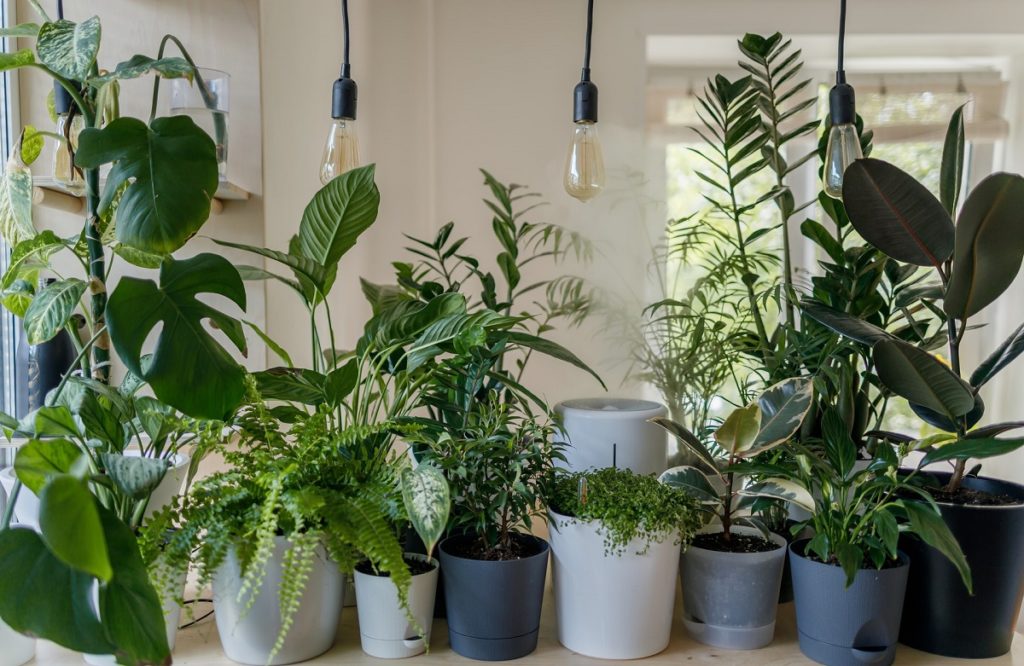Gardening has become a great pandemic hobby. Coping with the sudden outbreak of a global pandemic was not easy by any means. A lot of things were severely affected, from your work to your social life. As people started embracing the shelter-in-place measures, they turned to plants for comfort.
After almost a year of being cooped up, it wouldn’t be surprising if you’ve already started your own garden. It helps with your general health and wellness, so that’s a wonderful idea, and you should keep doing it. One of the biggest challenges that might go against your green thumb, however, is the amount of green space you have left.
Take It Inside
The easiest way to keep your planting going is to start an indoor garden. Houseplants can serve to have a lot of benefits as well. They could improve your home’s air quality as well as the aesthetic, serving both function and form. You could even plant your own small vegetables, fruits, and herbs to elevate your cooking. Just make sure they don’t wilt and dry out.
It’s common knowledge that any greenery needs sunlight to survive. A lot of people’s concerns are centered around this particular issue if they transition to indoor gardening. Will the light be enough to help their plants survive?
You could try windowsill gardening for your plants to get direct sunlight. Then again, your window can only handle a couple of plants at a time. The sunlight distribution will also most likely be uneven. Well, worry no more. Grow lights will be your new best friend.

Let There Be Light
There’s a lot more to grow lights than just shining them over your plants. The most distinguishable difference that they have over regular light is in the bulbs. Grow lights are often a substitute for sunlight, so brightness and temperature are important.
While there are many indoor grow lights readily available, you should still be wary of what to get. There are many factors to consider before purchasing the right grow lights for you and your greens. Here are some things to look out for.
Ease of Use
Keeping your grow lights operational is a top priority for any indoor gardener. You should always consider the installation and maintenance they would need in the long-run. Some lights call for a lot more effort than others. There is also a lot of safety and convenience-related matters to think about.
Do they make too much noise? How much heat do they produce? Will your energy consumption spike? Of course, there are a lot of things that could go wrong at any moment. It’s best to always keep the contact of an electrician equipped for emergencies at the ready, just in case you’d need a hand.
Size
One of the main reasons you’re transitioning to indoor gardening is to conserve more space. While grow lights are relatively small, it’s still important to look at their size. Think about how many plants you’re planning to cover. Your grow lights should be enough to keep all of them nourished.
Other than the reach, how much your grow lights also weigh factor in. If you have a habit of redecorating your interior often, it would be much better to invest in light and portable grow lights. This way, it’s easier for you to move things around as well.
Type
There are three basic types of grow lights you should know. The first is fluorescent grow lights which can be further subdivided into fluorescent tubes and compact fluorescent lights (CFL).
Fluorescent tubes are fairly thin, making them ideal for small spaces. The only downside is that they need to be placed closer to plants. Temperature becomes a big problem in this setup. While the same goes for CFLs, they don’t emit too much heat, which is safer for plants. CFLs are also more energy-efficient.
Next are high-pressure sodium (HPS) grow lights. These lights are more commonly used by experienced or commercial indoor gardeners. While the technology is superior to fluorescent lights, the heat they produce is excessive. Installation and maintenance costs could also be expensive.
Finally, there are LED grow lights. These lights produced almost zero heat and are the most energy-efficient among the three. LED lights are the best for creating an indoor environment for plants. However, they are the most expensive type of grow lights, and LEDs can also be harmful to the eyes.
Shine Bright
The benefit of having an indoor garden means you won’t have to be at the mercy of the elements outside. Seasons and weather patterns may change, but your plants could flourish year-round. Grow lights will definitely help you keep them alive and well regardless of the different indoor plants you’re planning to nurture in your home. Wilting will be a thing of the past.

